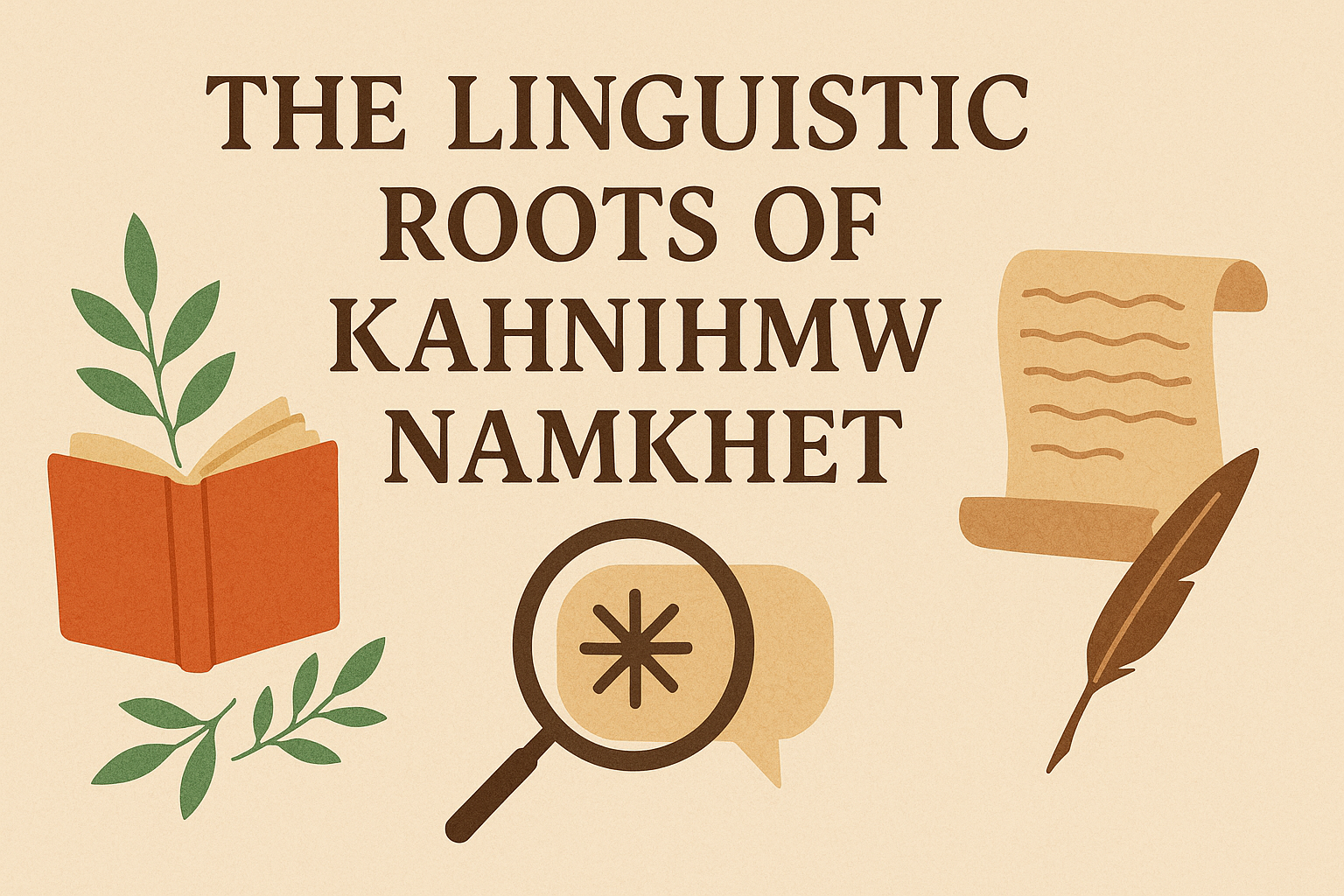In an age where language and culture intersect more rapidly than ever, certain phrases emerge from obscurity to capture the attention of internet communities, linguists, and cultural explorers alike. One such phrase is “Kahnihmw Namkhet.” Mysterious in tone and ambiguous in meaning, this phrase has sparked intrigue across various platforms, leaving many wondering: Where does it come from? What does it mean? Is it a real language or a cryptic code?
What Is “Kahnihmw Namkhet”?
To begin with, “Kahnihmw Namkhet” does not appear in any mainstream dictionary, linguistic database, or known cultural reference book. It is neither a recognized idiom nor part of a documented language—at least not in the traditional academic sense. However, that doesn’t mean it lacks structure or potential linguistic depth.
The phrase itself can be broken down into two parts:
-
Kahnihmw – a construction that resembles a phonetic mix of Native American languages and Austroasiatic linguistic patterns.
-
Namkhet – reminiscent of Southeast Asian languages, particularly Thai or Khmer, due to the common use of syllables like “nam” and “khet.”
Despite not being traceable to a specific language family, the phonetic makeup of “Kahnihmw Namkhet” opens doors to comparative linguistic analysis.
Possible Linguistic Influences
1. Austroasiatic Roots
One hypothesis suggests that “Namkhet” could be a Southeast Asian term, especially when broken down:
-
Nam means water in Thai, Lao, and some Khmer dialects.
-
Khet refers to a district or administrative region in Thai.
In this light, “Namkhet” might be interpreted as “water district” or “region of water,” suggesting a place-based origin.
2. Native American Linguistic Patterns
The word Kahnihmw resembles the structure of Native American languages, particularly those from the Iroquoian family. For example:
-
The Mohawk word for village is kaná:takon.
-
Kahni may echo similar phonetics, possibly denoting a location or community.
-
The “mw” ending resembles tonal and nasalized constructions often seen in Algonquian languages.
Could “Kahnihmw” imply a sacred or natural place in a forgotten or altered indigenous dialect?
3. Constructed or Creole Languages
Given the diversity in its phonetics, “Kahnihmw Namkhet” may also be the product of:
-
Constructed languages (like Tolkien’s Elvish or Esperanto), built for fictional or symbolic purposes.
-
Creole hybrids, where words from multiple languages blend over time due to colonization, migration, or cultural syncretism.
If so, Kahnihmw Namkhet might not be a “real” word in traditional terms but could have symbolic or cultural weight in a niche digital or subcultural community.
Cultural and Mythological Interpretations
Language often carries culture, and even fabricated or hybrid terms can reflect deeper symbolic meanings. “Kahnihmw Namkhet” may have entered the digital lexicon through:
-
Art installations or indie literature, where abstract naming is used to evoke curiosity.
-
Fantasy role-playing games (RPGs) or online storytelling, where unique names and terms build immersive worlds.
-
Spiritual communities adopting or repurposing non-English phrases to evoke exoticism or mystique.
In these contexts, the phrase could symbolize:
-
A mythical place.
-
A spiritual state of being.
-
A forgotten civilization.
-
A coded warning or prophecy.
Internet Culture and the Rise of Mystery Phrases
Terms like “Kahnihmw Namkhet” are not unique in their viral mystique. The internet has a long history of creating and circulating enigmatic terms that blend cultural, linguistic, and meme-like qualities. Examples include:
-
“SCP” entries that fictionalize secret phenomena with cryptic terminology.
-
Creepypasta terms that gain eerie connotations through collective storytelling.
-
ARG (Alternate Reality Game) names and passwords designed to spark user engagement and puzzle-solving.
In this ecosystem, “Kahnihmw Namkhet” thrives as a digital artifact—an unsolved mystery that challenges readers to research, guess, or interpret.
Psychological and Semiotic Appeal
Why are people drawn to phrases like “Kahnihmw Namkhet”? There are several reasons:
-
Semiotic Ambiguity
The phrase carries weight despite its lack of clear meaning. It feels meaningful because it resembles linguistic structures we’ve encountered. -
Exotic Allure
Non-English or hybrid terms often evoke a sense of otherness, triggering curiosity and a desire to decode. -
Cognitive Engagement
People enjoy unraveling puzzles. A phrase that defies immediate understanding encourages exploration and theorization. -
Memetic Power
As more users encounter, question, and share the phrase, its perceived importance grows, much like urban legends or folk myths.
User-Generated Theories and Urban Myths
Several speculative theories have emerged online regarding Kahnihmw Namkhet:
-
Theory 1: It’s a Portal Code
Some internet users claim it references an interdimensional or virtual portal name from an indie game or ARG. -
Theory 2: A Forgotten Language Revival
Others speculate that Kahnihmw Namkhet could be part of an effort to revive or reconstruct a dying indigenous language, possibly altered phonetically for artistic or protective reasons. -
Theory 3: AI-Generated Language
With the rise of neural networks trained to generate fantasy names and languages, it’s entirely possible that this phrase was created by AI, then adopted by communities as “found language.”
The Role of Context and Future Interpretations
The beauty of ambiguous terms like Kahnihmw Namkhet lies in their adaptability. Depending on the context in which it appears—whether in a tweet, a video game, an art piece, or a poem—the meaning can shift entirely.
-
In an environmental documentary, it might symbolize a sacred place threatened by modern development.
-
In a dystopian novel, it could be the name of a resistance movement.
-
In a spiritual blog, it might be a mantra or divine realm.
Ultimately, language is fluid, and the meaning of Kahnihmw Namkhet is still being shaped by its users.
Conclusion: Mystery as a Medium
While the linguistic roots of Kahnihmw Namkhet remain open to interpretation, the journey of exploring its possibilities reveals something deeper about language and culture today. In a globalized, hyperconnected world, new terms emerge not from geography or lineage but from curiosity, creativity, and collective storytelling.
Whether it’s a real word, a constructed term, or a digital myth, Kahnihmw Namkhet is a reflection of how meaning is made—not just through etymology, but through community, curiosity, and imagination.
In this sense, perhaps the true “root” of Kahnihmw Namkhet is not found in ancient texts or forgotten languages—but in our desire to find wonder in the unknown.



